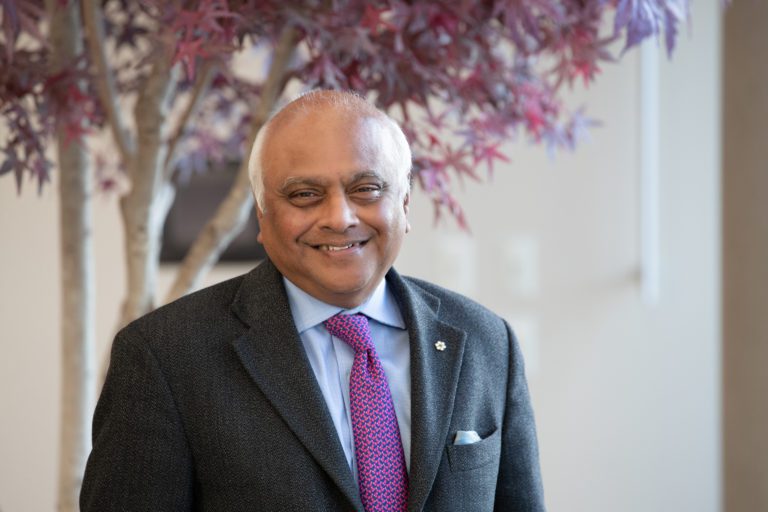
Ashkan Shoamanesh
PHRI was well-represented at the European Stroke Organisation (ESO) 2023 conference in Munich, Germany May 24-26.
PHRI Scientists Mike Sharma, Ashkan Shoamanesh, and PHRI Senior Scientist John Eikelboom, among others, to discuss the promising role of FXI(a) inhibition for secondary stroke prevention and patient protection.
PHRI Investigator Aristeidis Katsanos presented in a discussion about inflammation in intracerebral hemorrhage (ICH) including his own study, CoVasc-ICH looking at colchicine for the prevention of vascular events after an acute ICH.
PHRI Scientist Kanjana Perera presented in a session on practical and evidence-based management of breakthrough strokes in patients with atrial fibrillation who are on anticoagulation.
Sharma also participated in a discussion on diversity in stroke research at the European Stroke Organization (ESO) 2023 conference recently. He was joined by guests Cheryl Carcel and Valeria Caso; they were interviewed by ESOC anchors Joanna Wardlaw and Daniel Strbian. (See video here.)
Sharma noted there are multiple barriers to sufficient diversity and inclusion in stroke trials. “In stroke prevention trials, where I do most of my work, I think that the timeframe actually works against us because in an acute trial, you have to get every patient you possibly can.”
He continued: “Then there are internal barriers that come up – all of our biases come into play – we’ve been looking at is how to increase our diversity in terms of race and ethnicity.” He added “one of the things we’ve managed to do, such as in OCEANIC-STROKE, is to increase the geographic scope, so we get a more diverse trial population by going to countries with large populations and very poor representation typically, such as South Asia and sub-Saharan Africa.”
Even though [race and ethnicity] are not biologically defined states, the health behaviours and interactions with the health systems that influence outcomes may well be different… and may be different for populations living in their native countries as opposed to immigrant populations living in other countries.



